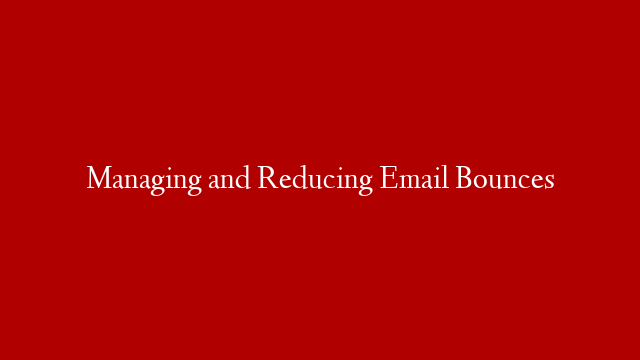Email messages may not reach the recipients and return to the sender for quite different reasons. As a rule the returned email generated by the mail server contains the description of the error that caused the delivery failure. Based on those errors bounced emails are divided into two types: soft bounces and hard bounces. What is the difference between them?
A soft bounce is an email message that returns to the sender due to some temporary reasons: busy mailbox, blocked domain, mailbox full, account temporary down, network busy, mailbox over limit, etc. If after several attempts to deliver such a message, it still bounces, a soft bounce email is classified as hard bounce.
Hard bounces are permanently undeliverable email messages. The causes are invalid addresses (email or domain name doesn’t exist, spelling errors), or the mail server has blocked your server, or filtered emails and returned them as hard bounced.
Typically the error codes for soft bounced emails begin with 4 and for hard bounces – with 5. But the mail server can interpret bounces differently, so a soft bounce on one server may be classified as a hard bounced email on a different mail server.
Dealing with bounced emails after each mailing campaign is critical for every reputable marketer. Here are some quick tips you can follow to minimize the number of bounces, reduce email delivery costs, and increase conversion rates of your email campaign:
– Check emails in your list for validity. You can use an email verifier software (you can find plenty of them on the Internet) to check the list for invalid emails/domains. Or, at least check the addresses for typos manually.
– Confirm email addresses. Send a confirmation message after the user subscribes to your list. If the message bounces, you will know that the address is not valid from the start. Also, you’ll want to have a “Confirm E-mail Address” field in your sign-in form requiring the user to re-type his email address.
– Include “Edit Your Account” link into your emails. This will make it possible for your subscribers to keep their email addresses up-to-date with you.
– Check the blacklists and assure that neither you nor your ISP is blacklisted. This is important because you will not receive a bounced message as a result of blacklist.
– Remove SpamTrap addresses from your list. A spamtrap address is an email address, to which nobody should be sending an email. Such email addresses are often added maliciously to identify the senders of spam. Examples are abuse@ postmaster@, nospam@, etc.
– Send a test message to yourself. Before emailing to your subscribers, send a copy of your newsletter to yourself or some of your colleagues to check if everything is all right (pictures are displayed, links are working, formatting is correct).


